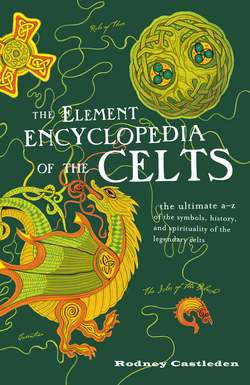Читать книгу The Element Encyclopedia of the Celts - Rodney Castleden - Страница 10
THE NINETEENTH-CENTURY VIEW
ОглавлениеThere is a familiar and oftenrepeated classic nineteenthcentury view of the Celts, which survives in some serious academic work written as late as the 1970s, and in more popular writings since then that are based on the older books. It is still being promoted in some quarters. As recently as the 1990s, a book was published in Ireland, in Irish, and therefore presumably for Irish consumption, which gave the view in outline:
Before Rome became a power, the people we call Celts dominated much of Europe. Their influence ranged from Britain and Ireland in the north to France and Spain in the south and east as far as Turkey. They were united not by a common ruler but by a common language and culture… Their power declined, the influence of their language and culture remains.
This persuasively expressed view gives us an Iron Age race of people bonded by language and culture, with a heartland in central Europe in the first millennium BC. These people migrated outward from their heartland in all directions to invade and colonize most of Europe, taking their culture with them (roughly 800–100 BC). The objects unearthed by antiquarians and archeologists were identified as being in more than one style, so three successive invasions or waves of migrants were inferred, representing three different cultures: Hallstatt, La Tène, and Belgic.
A key element in this approach is the idea that almost everywhere the old pan-European Celtic culture has died out. Only a few refuges are left in the far west—Galicia, Brittany, Cornwall, Wales, Scotland, and Ireland.
Interestingly, however, the Greek and Roman writers who used the word “Celts” applied it only to the barbarian people who were their northern neighbors, not to the people living on the Atlantic fringes to the far northwest. There is a certain irony in this, as these are just the people who are usually thought of as Celts today.
